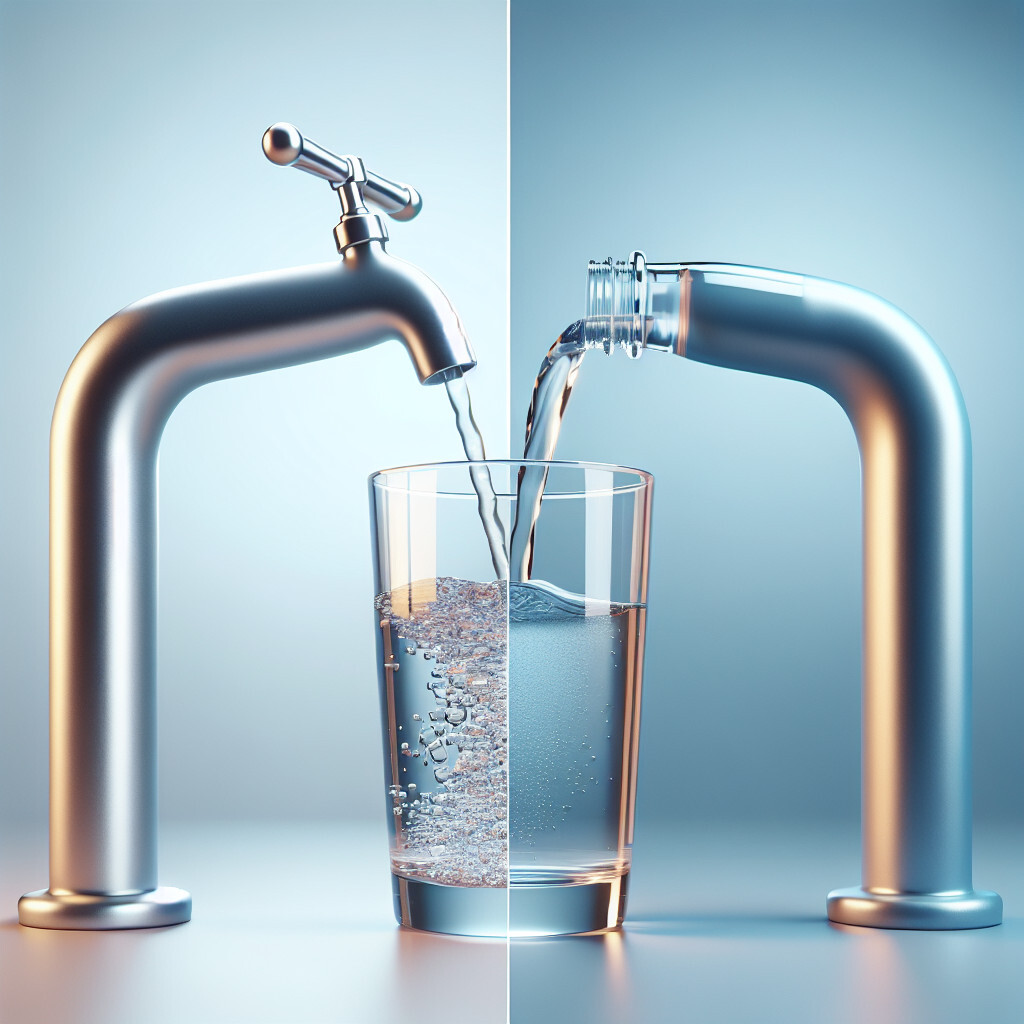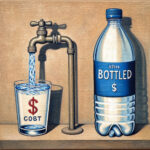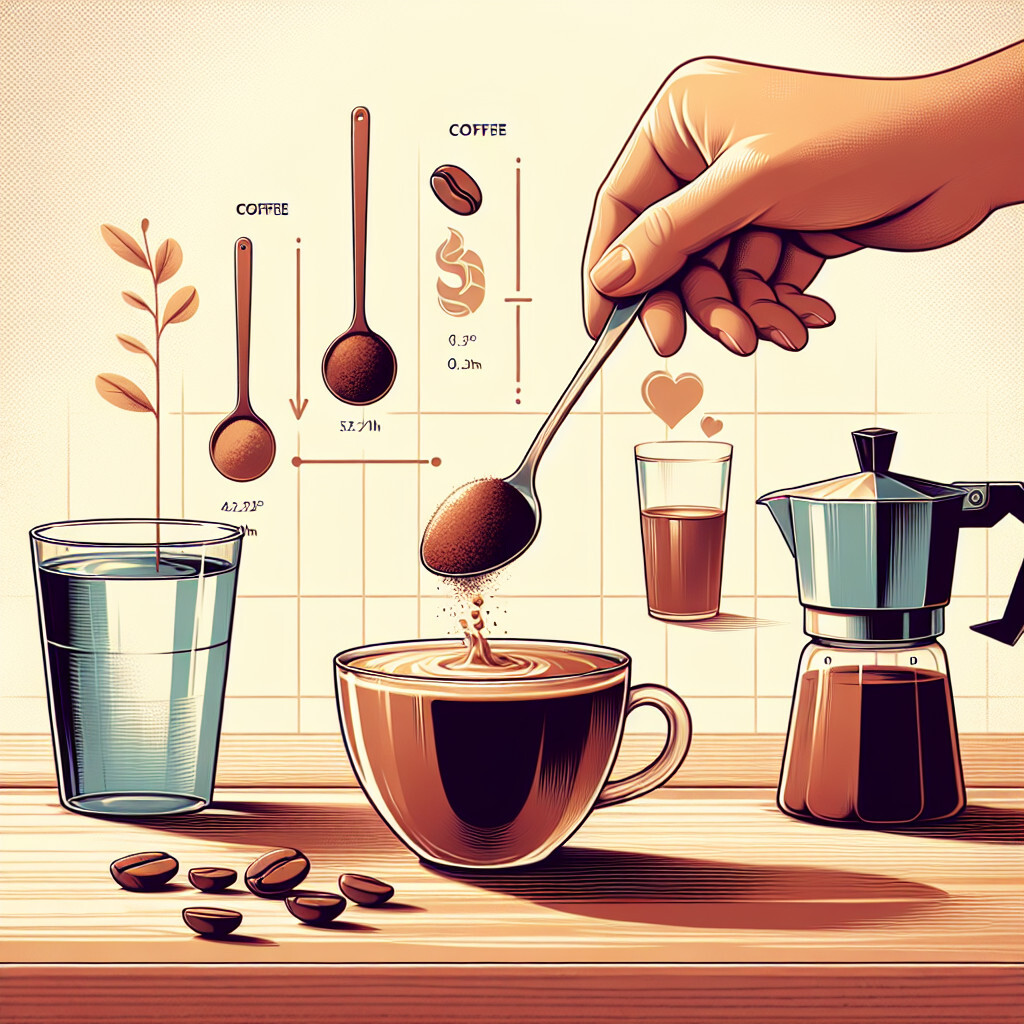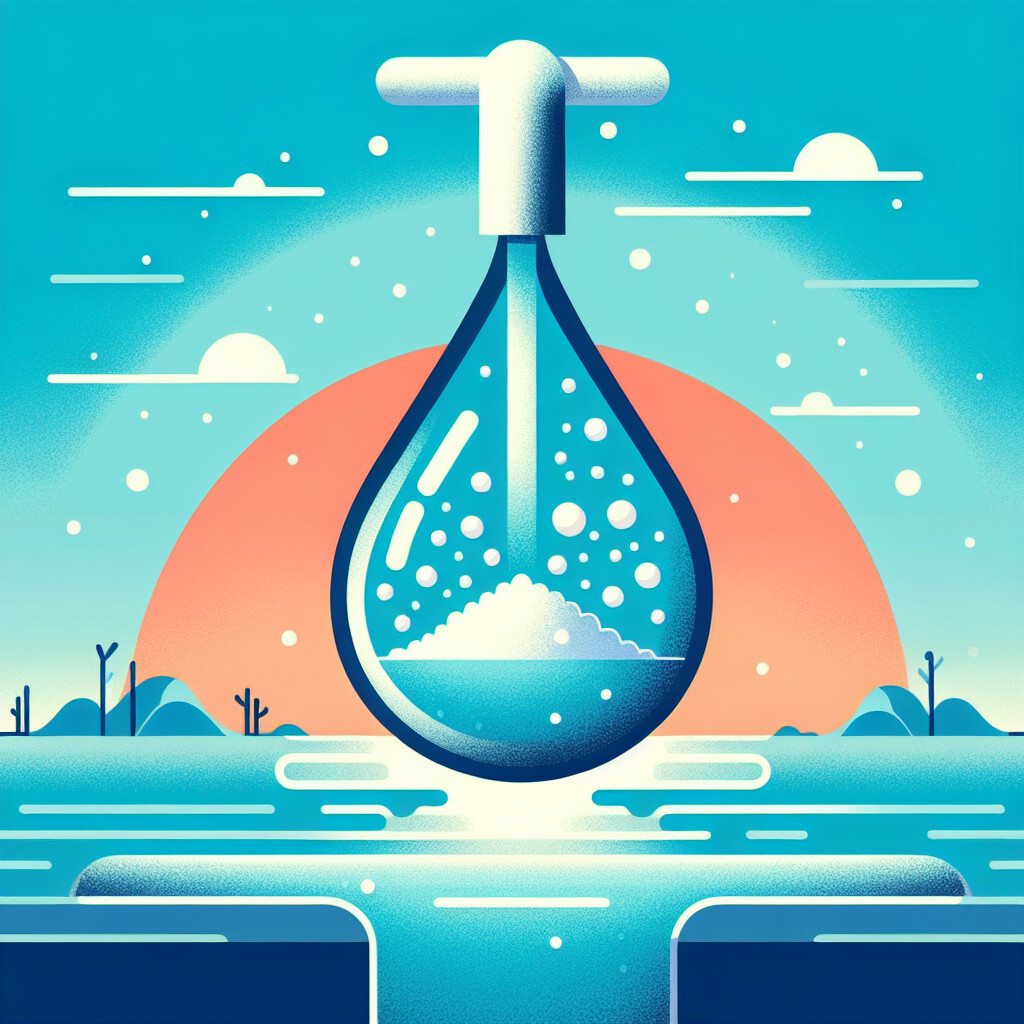-
Table of Contents
“Quench your thirst, not your wallet: Tap water vs. Bottled water.”
Introduction
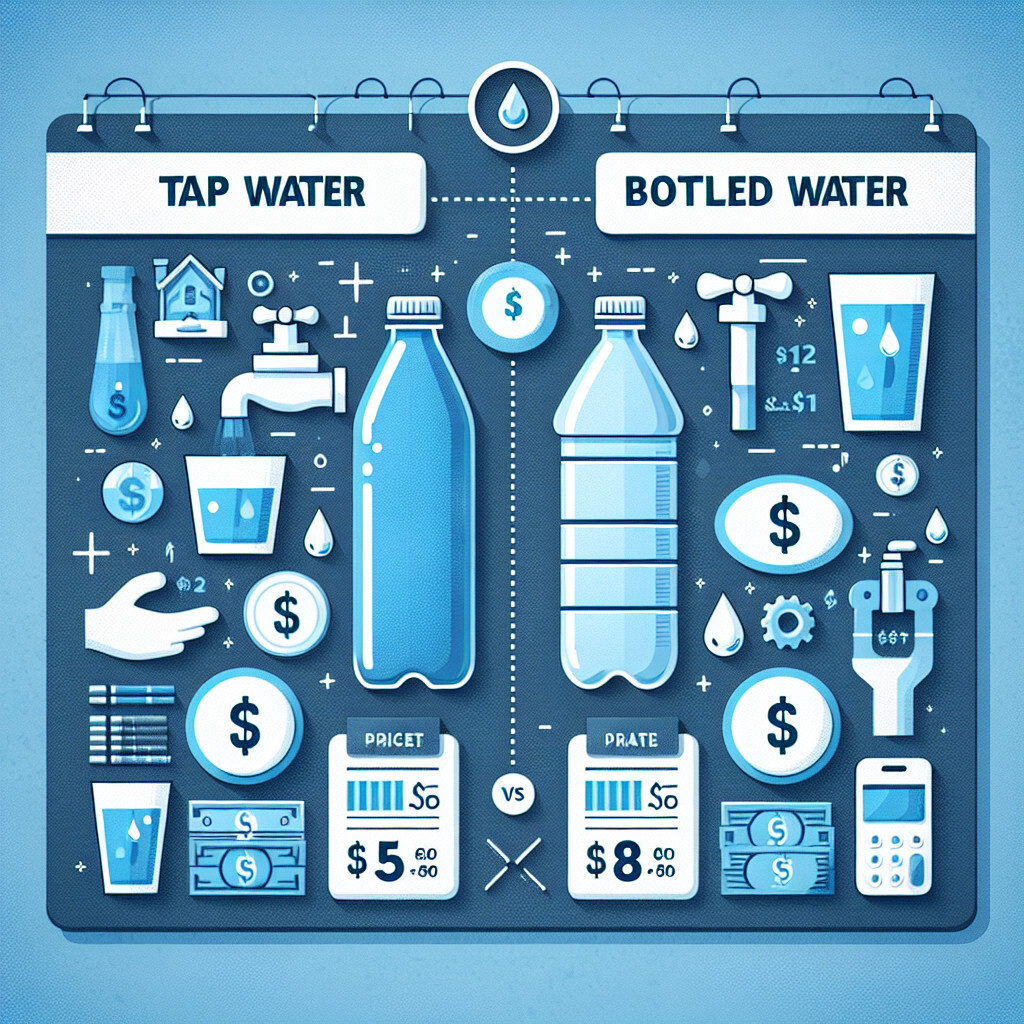
Cost comparison between tap water and bottled water involves analyzing the financial implications of consuming either of the two. Tap water, typically sourced from local water supplies, is generally considered a cost-effective and accessible option. On the other hand, bottled water, which is often marketed as a healthier or more convenient alternative, usually costs significantly more. This comparison not only has economic implications but also environmental, considering the waste generated by plastic bottles. The choice between tap water and bottled water can thus have a profound impact on both personal budgets and the environment.
Analyzing the Financial Impact: Tap Water vs Bottled Water
The financial impact of choosing between tap water and bottled water is a topic of considerable interest, particularly in an era where economic prudence is paramount. This article aims to provide a comprehensive analysis of the cost comparison between these two sources of hydration, shedding light on the economic implications of each choice.
To begin with, tap water is generally considered a cost-effective option. In the United States, the average cost of tap water is approximately $0.002 per gallon, according to the Environmental Protection Agency (EPA). This figure, however, can vary depending on the region and the quality of the local water infrastructure. Nevertheless, even at its most expensive, tap water rarely exceeds $0.01 per gallon.
On the other hand, bottled water presents a stark contrast in terms of cost. The price of bottled water can vary significantly depending on the brand, the source of the water, and the size of the bottle. However, on average, bottled water costs around $1.22 per gallon, according to the Beverage Marketing Corporation. This figure is over 600 times the cost of tap water, making bottled water a significantly more expensive option.
The financial impact of this cost difference becomes even more pronounced when extrapolated over a longer period. For instance, if an individual consumes the recommended eight glasses of water per day, this equates to approximately half a gallon. Over the course of a year, this would amount to 182.5 gallons. Using the average costs mentioned earlier, this would cost around $0.365 for tap water and $223.05 for bottled water. This stark difference underscores the significant financial impact of choosing bottled water over tap water.
However, it’s important to note that these figures do not take into account the potential costs associated with ensuring the safety and quality of tap water. In some regions, tap water may require additional filtration or treatment to be safe for consumption, which could add to the overall cost. Nevertheless, even with the added expense of a high-quality water filter, the cost of tap water generally remains significantly lower than that of bottled water.
Moreover, the financial impact of bottled water extends beyond the individual consumer. The production and disposal of plastic bottles contribute to environmental degradation, which can have long-term economic implications. The Pacific Institute estimates that the energy required to produce and transport bottled water in the U.S. could power 190,000 homes for a year. The cost of managing plastic waste, much of which ends up in landfills or the ocean, also places a significant financial burden on society.
In conclusion, while the choice between tap water and bottled water may seem trivial, it carries significant financial implications. Tap water, even with additional treatment costs, is generally far more cost-effective than bottled water. Moreover, the environmental costs associated with bottled water production and disposal further tip the economic scales in favor of tap water. Therefore, from a financial perspective, tap water appears to be the more prudent choice. However, the ultimate decision should also take into account factors such as personal preference, health considerations, and local water quality.
The True Cost of Hydration: A Comparison of Tap and Bottled Water
The True Cost of Hydration: A Comparison of Tap and Bottled Water
In the quest for hydration, consumers are often faced with a choice between tap water and bottled water. While the decision may seem trivial, it carries significant implications for both personal finances and the environment. This article aims to provide an informative comparison of the costs associated with tap water and bottled water, shedding light on the true price of quenching our thirst.
To begin, let’s consider the financial aspect. Tap water, supplied by local utilities, is incredibly cost-effective. In the United States, for example, the average cost of tap water is less than $0.01 per gallon. This means that filling a 16-ounce glass from the tap costs less than a penny. On the other hand, bottled water is significantly more expensive. The price can vary widely depending on the brand and location, but on average, a gallon of bottled water costs around $1.22. This means that the same 16-ounce glass of water would cost about $0.10 if filled with bottled water. While this may not seem like a significant difference, it adds up over time. For a family of four consuming eight glasses of water per person per day, the annual cost would be around $3.65 for tap water and $1,460 for bottled water.
However, the cost of water is not solely financial. There’s also an environmental cost to consider. The production and disposal of plastic bottles contribute significantly to pollution and resource depletion. It’s estimated that making bottles to meet America’s demand for bottled water uses more than 17 million barrels of oil annually, enough to fuel 1.3 million cars for a year. Moreover, only about 30% of plastic water bottles are recycled, with the rest ending up in landfills or the ocean, where they can take up to 1,000 years to decompose.
In contrast, tap water has a much lower environmental impact. It’s delivered through an infrastructure that’s already in place, requiring no additional packaging or transportation. While water treatment facilities do consume energy, their impact is significantly less than that of bottled water production. Furthermore, tap water is subject to stringent regulations and testing to ensure its safety and quality, whereas bottled water is not always held to the same standards.
In conclusion, when comparing the cost of tap water and bottled water, it’s clear that tap water is the more economical and environmentally friendly choice. However, it’s important to note that the quality of tap water can vary depending on the location. In areas where tap water is not safe to drink, bottled water may be the only viable option. In such cases, consumers can still make a positive environmental impact by choosing brands that use recycled materials and recycling their bottles after use.
Ultimately, the decision between tap water and bottled water is a personal one, influenced by factors such as taste, convenience, and health concerns. However, by understanding the true costs associated with each option, consumers can make more informed choices about their hydration habits.
Economic Implications of Choosing Bottled Water over Tap Water
The economic implications of choosing bottled water over tap water are significant and multifaceted. This cost comparison between tap water and bottled water reveals a stark contrast that may surprise many consumers. While the convenience and perceived purity of bottled water may seem appealing, the financial and environmental costs are substantial.
To begin, the price difference between tap water and bottled water is staggering. On average, tap water costs less than a penny per gallon, while bottled water can cost anywhere from $0.89 to $8.26 per gallon, depending on the brand and location. This means that bottled water can be up to 2,000 times more expensive than tap water. For the average household, switching from bottled water to tap water could result in hundreds of dollars in savings each year.
Moreover, the cost of bottled water extends beyond the price tag. The production and transportation of bottled water also have significant economic implications. The process of bottling water involves extracting, purifying, and packaging the water, all of which require energy and resources. The transportation of bottled water, often across long distances, further adds to its carbon footprint and economic cost. In contrast, tap water is typically sourced locally and requires less energy to process and distribute.
Furthermore, the economic impact of bottled water also includes the cost of waste management. Each year, billions of plastic water bottles end up in landfills, where they can take up to 1,000 years to decompose. The cost of managing this waste, both in terms of financial resources and environmental impact, is substantial. In contrast, tap water produces virtually no waste, as it can be consumed using reusable containers.
However, it’s important to note that the quality and safety of tap water can vary depending on the location. In some areas, tap water may contain contaminants or have an unpleasant taste, leading some consumers to prefer bottled water. While this is a valid concern, there are cost-effective solutions available. For example, water filters can remove most contaminants from tap water, and they are typically much cheaper in the long run than buying bottled water.
In addition, investing in the infrastructure needed to improve the quality of tap water can have significant economic benefits. Not only would this reduce the need for bottled water, but it could also create jobs and stimulate local economies. Moreover, ensuring access to clean, safe tap water is a matter of public health, which can have far-reaching economic implications.
In conclusion, while bottled water may seem like a convenient and safe choice, the economic implications of this choice are significant. The cost of bottled water is not only reflected in its price but also in the environmental and societal costs associated with its production, transportation, and waste management. On the other hand, tap water is a much more cost-effective and environmentally friendly option. By considering these factors, consumers can make more informed decisions about their water consumption and contribute to a more sustainable and economically viable future.
Unveiling the Price Tag: The Real Cost of Tap Water vs Bottled Water
Unveiling the Price Tag: The Real Cost of Tap Water vs Bottled Water
Water is a fundamental necessity for life, and its consumption is a daily routine for most people. However, the choice between tap water and bottled water can be a contentious issue, with cost being a significant factor in the decision-making process. This article aims to provide an informative comparison of the costs associated with both tap water and bottled water, shedding light on the real price tag of our hydration choices.
Tap water, supplied by local utilities, is often perceived as the more economical choice. In the United States, the average cost of tap water is approximately $0.002 per gallon, making it a seemingly negligible expense in most households. This cost includes the infrastructure and treatment processes necessary to ensure the water is safe for consumption. However, it’s important to note that this cost can vary depending on the region and the quality of the local water supply. Some households may also incur additional costs for home water treatment systems or filters to improve taste or remove contaminants, which can significantly increase the overall cost of tap water.
On the other hand, bottled water is often viewed as a more expensive, yet convenient and potentially safer, alternative. The price of bottled water can vary greatly, depending on the brand and the source of the water. On average, a gallon of bottled water can cost around $1.22, which is over 600 times the cost of tap water. This cost not only includes the water itself but also the bottling, packaging, marketing, and distribution processes. Furthermore, consumers often pay a premium for bottled water due to perceived benefits such as improved taste, convenience, and safety.
However, the financial cost is just one aspect of the price tag associated with our water choices. The environmental cost is another significant factor that should not be overlooked. The production and disposal of plastic water bottles contribute to pollution and require substantial energy resources, leading to a high environmental cost. In contrast, tap water has a much lower environmental impact, especially when consumed using reusable containers.
Moreover, the societal cost of bottled water is also worth considering. The commodification of water raises ethical questions about access to this vital resource. While bottled water companies profit, many communities around the world lack access to clean, safe drinking water. In contrast, public water utilities aim to provide an essential service to all, regardless of income.
In conclusion, while tap water may appear to be the more economical choice at first glance, the real cost of water goes beyond the price tag. It’s crucial to consider the environmental and societal costs associated with our choices. Bottled water may offer convenience and perceived safety, but it comes with a high financial, environmental, and societal cost. On the other hand, tap water, especially when filtered, can provide a cost-effective and environmentally friendly alternative for daily hydration. Ultimately, the choice between tap water and bottled water should be an informed decision, taking into account not only the financial cost but also the broader impacts on our planet and society.
Q&A
1. Question: How much does tap water typically cost?
Answer: The average cost of tap water in the U.S. is $0.004 per gallon.
2. Question: How much does bottled water typically cost?
Answer: The average cost of bottled water in the U.S. is approximately $1.22 per gallon.
3. Question: Is tap water or bottled water more cost-effective?
Answer: Tap water is significantly more cost-effective than bottled water.
4. Question: How much could I save annually by drinking tap water instead of bottled water?
Answer: If you consume one gallon of water per day, you could save approximately $447.30 per year by drinking tap water instead of bottled water.
Conclusion
In conclusion, tap water is significantly less expensive than bottled water. While the cost of tap water can vary depending on the region, it is generally a fraction of the cost of bottled water. This makes tap water a more cost-effective choice for daily hydration needs.

